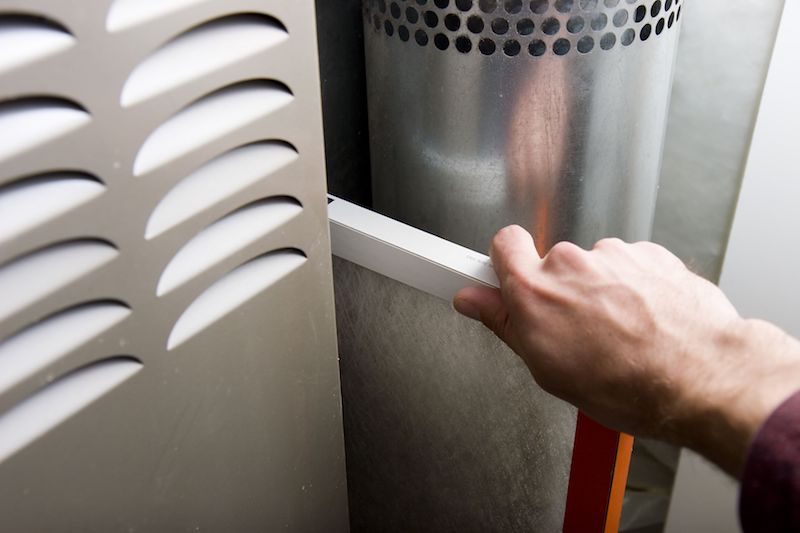
If you’re uncertain whether your Lawrence residence has bad indoor air quality (IAQ), it probably does.
We are indoors a lot. As a matter of fact, we’re in a building up to 90% of the time, according to the U.S. Environmental Protection Agency. And the air inside homes could be 2–5 times worse than outdoors, which may create long-term health issues.
Most Common Sources of Bad IAQ
We’ve compiled a list of the most frequent origins of bad IAQ, the problems they make and how you can remedy these indoor air pollutants. If you’re worried about the air inside your residence, we advise chatting with a specialist like Scott Temperature about which solutions are ideal for your house.
Volatile Organic Compounds
Volatile organic compounds, or VOCs, are chemicals released by regular household products.
They’re found in paint and stains along with:
- Furniture
- Carpet
- Building materials
- Cleaning products
- Cosmetics
- Air fresheners
- Candles
When these vapors accumulate in your home, they might irritate your eyes, nose and throat. They can also create headaches and nausea. Regardless of whether your home is in a rural or industrial location, an EPA study found indoor levels of these chemicals can be 2–5 times greater than the air outdoors.
Always use the manufacturer’s directions when using paint or cleaning supplies. Unlatching a window can help odors disperse faster.
Air purification systems can also better your air. This equipment partners with your heating and cooling unit to improve indoor air. When seeking a system, ensure it’s specifically designed to wipe out VOCs.
Dust and Pet Dander
Dust and pet dander can trigger health problems like asthma and allergies, especially when it constantly gets moved by your home’s comfort system. While you can vacuum more regularly and buy an improved air filter, an air filtration system could be a better solution.
This unit hooks to your comfort equipment to deliver strong filtration. Some models have hospital-level filtration for eliminating particles and bioaerosols.
Persistent Odors
Newer homes are securely sealed to increase energy efficiency. While this is great for your energy expenses, it’s not so good for your IAQ.
Stale odors can hang around for a greater amount of time because your house is pulling in less fresh air. Because keeping your windows open all year-round isn’t doable, here are two ways you can make your indoor air smell cleaner.
An air purification system is placed in your ducts to wipe out odors before they recirculate. Look for one with a carbon filter and the power to wipe out damaging VOCs. These systems can also help keep your household healthy by wiping out most bacteria and ordinary allergy triggers like pollen and mold spores.
A ventilation system takes out musty indoor air and replaces it with crisp outdoor air. There are two models of units (heat recovery and energy recovery), so call our professionals for more information on which type is ideal for your residence.
Unbalanced Humidity
It’s essential your house’s humidity remains even. Air that’s too moist can cause mold, while dry air can lead to respiratory symptoms.
Our technicians suggest 40–50% for the best comfort. To keep yours even, think over getting a whole-home humidifier or whole-home dehumidifier with your HVAC equipment.
Rather than having to pull a humidifier from room to room, this equipment delivers balanced humidity throughout your house.
Carbon Monoxide
Carbon monoxide is colorless gas you can’t smell. It’s a byproduct of insufficient combustion in fuel-burning appliances, like gas heating systems, water heaters or fireplaces.
It creates a serious health risk. In little levels, it can lead to flu-like sickness like headaches and nausea. It can be deadly in heavy concentrations.
We suggest annual furnace maintenance to make sure your unit is operating properly. This work allows our technicians to discover troubles before they begin, including malfunctions that can lead to carbon monoxide leaks.
The best way to keep your house free of carbon monoxide is to get detectors. These alarms must be on each floor near bedrooms and living spaces.
Enhance Your Residence’s Air Quality with the Scott Temperature Specialists
Informed that your house has poor air quality but not sure how to enhance it? Or unsure which option is best for you? Give our kind HVAC pros a call at 785-269-0465 or contact us online today. With free estimates and expert service, we’ll help you locate the ideal equipment for your needs and budget.
